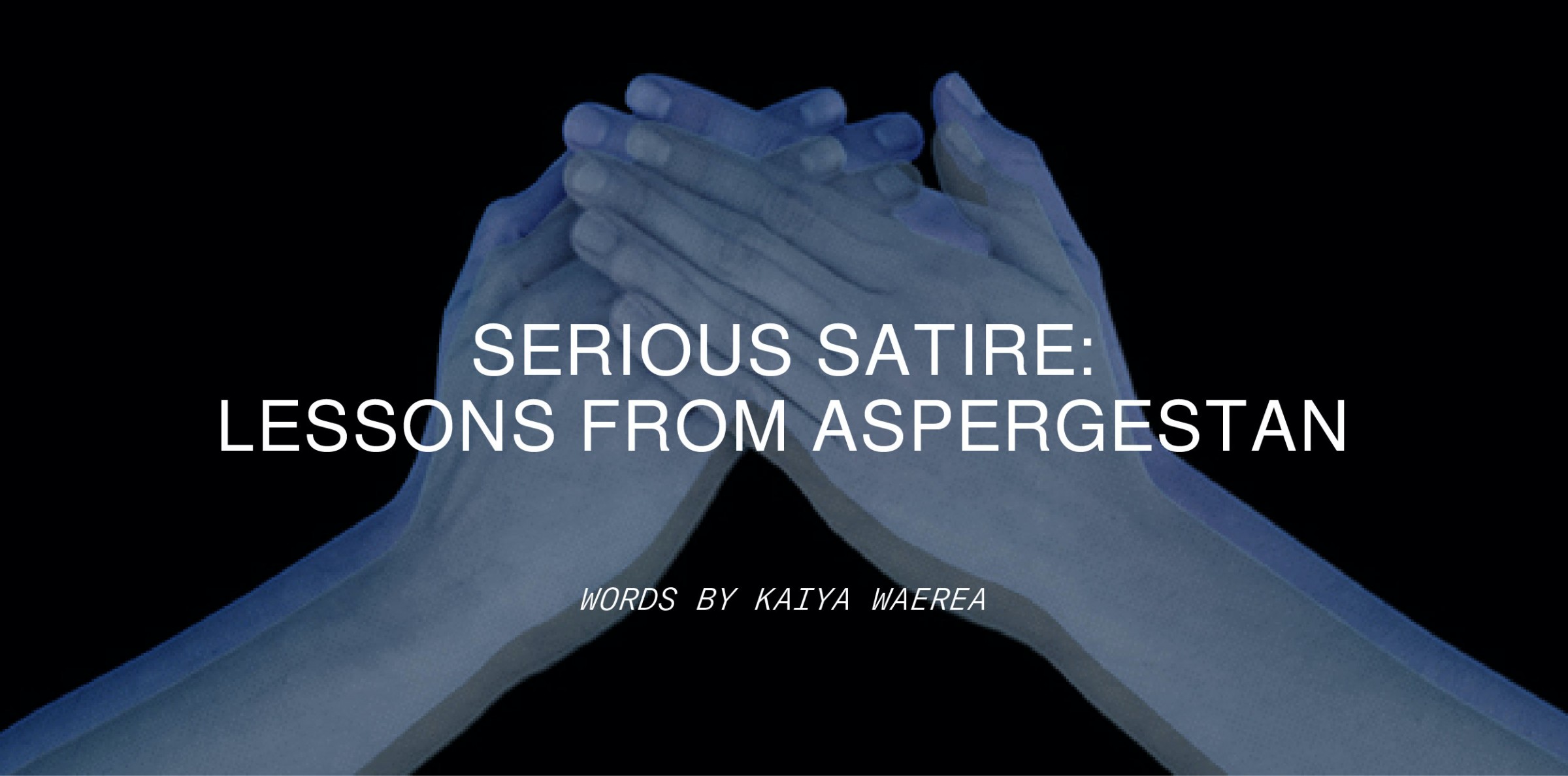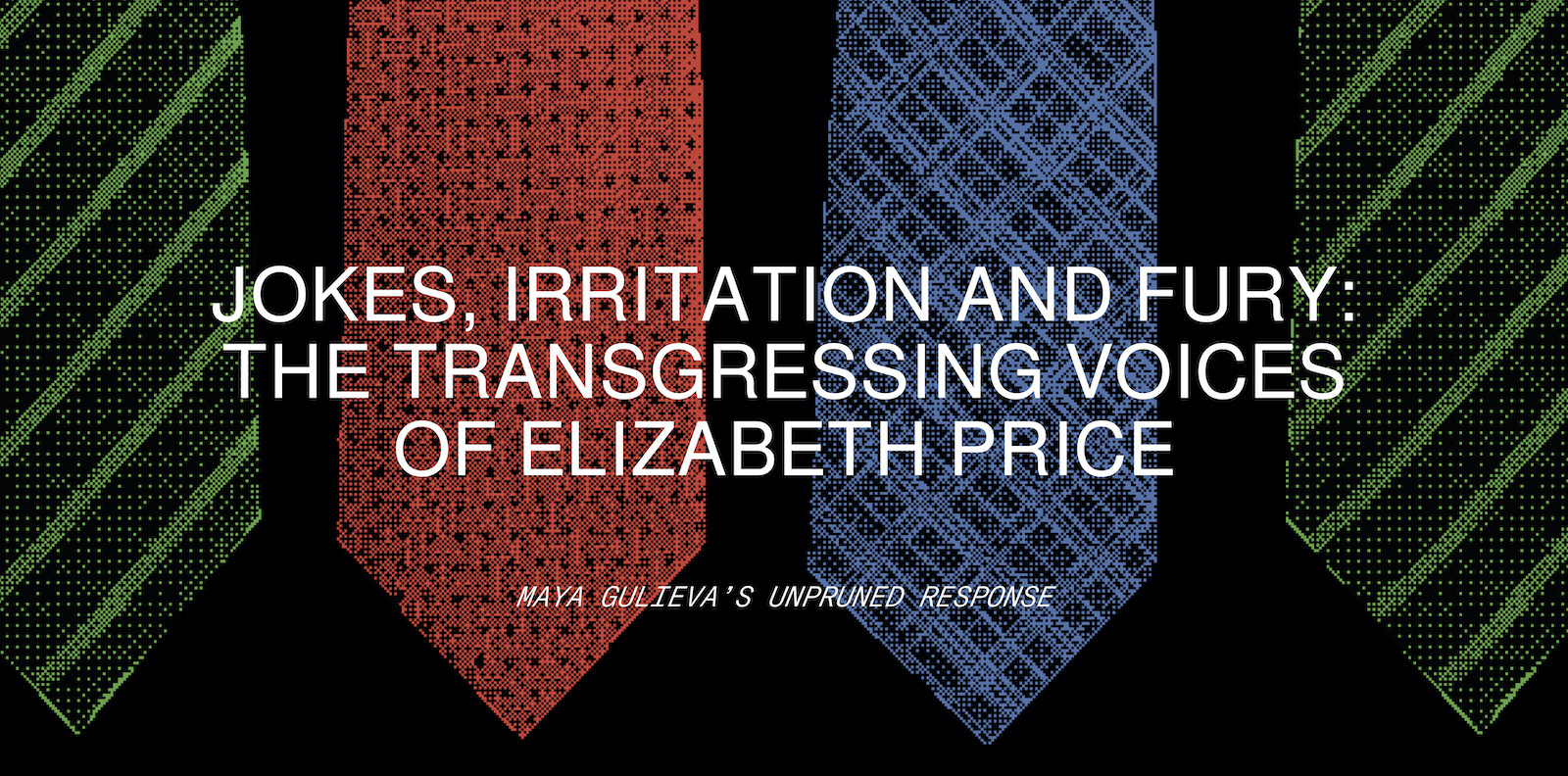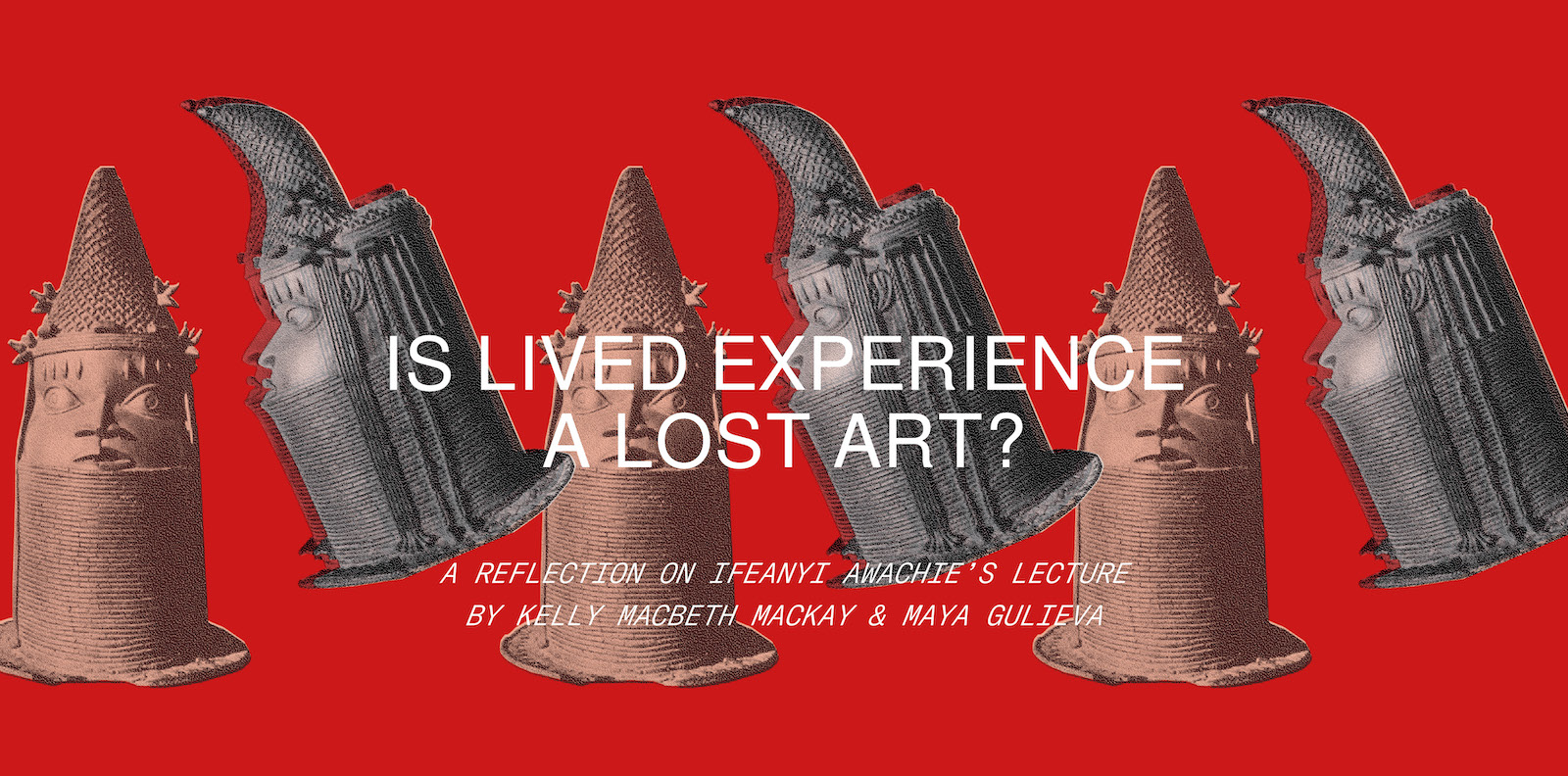


 November 24th, 2020
November 24th, 2020
 4:41 min read
4:41 min read  1289 words
1289 words
“I’m Hamja Ahsan and I’m the commander in chief of the global decolonial movement to overthrow extrovert-supremacy and I’m on a never ending world tour until that oppression system is overthrown.”
Speaking with deep sincerity and incisive sarcasm, Hamja Ahsan introduces himself as “a shy radical” at a talk titled Introvert Speculative Activism Design. Hosted by the RCA Visual Communication department, he is the third guest in the online lecture series Fugitive Voices, taking place on 11th October. The wry smile that follows the statement above will be one that we receive throughout the talk; characteristic of Ahsan’s position within what we might call the seriously satirical.
Ahsan’s book, Shy Radicals: The Antisystemic Politics of the Militant Introvert outlines the fictional nation state of Aspergistan, “the sanctuary, beacon, and homeland of oppressed Shy, Introvert and Autistic Spectrum peoples”. In a Kathy Acker-esque, nothing-is-untouchable way, Ahsan takes law as raw text and uses zine making and activists techniques to reimagine citizenship and the nation state. Appropriating political vehicles such as constitutions, flags, and referendums, Ahsan aggravates the expectations of accessibility, specifically but not exclusively in relation to neurodiversity and mental health.
A breath of fresh air in its stylistic deviance from the twee, cottage-core-ification of introversion, Ahsan’s work operates within the provocation opened up by the Social Model of mental health; more broadly, the Social Model of Disability. The Social Model rejects disability as an individual or medical fault to be cured, but instead articulates it as a socially produced category of discrimination based on hegemonic norms. Disability operates as an umbrella term for physical and mental impairment, neurodiversity, chronic illness, and mental distress. By the Social Model, disability can be seen as by design, as temporal, as culturally situated, and as reproduced through law. Developed by disability activists, it is historically anti-capitalist in its recognition of the capitalist maxim of work and productivity being key to who and when people are categorised as disabled and divergent. Shy Radicals presents an alternative hegemony, one which “shall neither compete, nor cooperate, with the Enemy,” one where moments of awkwardness become the signals of global solidarity.
Our boundaries of thought are tied to the boundaries of language, and re-languaging is a key part of Ahsan’s work. Neologisms such as “Extrovert-supremacy” and the careful capitalisation of “Shy” and “Introvert” work to develop a liberation movement and a collective identity in the face of the systemic oppression of Shy, Introvert and Autistic Spectrum peoples. This re-doing of language is a method well known to activists, as we can see with the coining of such terms as ‘neurodiverse’ and the ‘social model’, terms which arguably allow this project to exist in the first place. Ahsan’s neologisms also point to the real genealogy of the fictional Aspergistan—its constitution references the commandments and political revolutions of Kurdistan, Pakistan, the USSR and Cuba, the latter two of which, happening before Ahsan’s lifetime, feel to him like “one big sci-fi epic.” These historical references create a constellation within which we can get seriously satirical, or, commit to the fictional, to unravel the edges of our societal imaginary. In doing this, Shy Radicals re-draws the line of ‘reasonable’ adjustments to support people’s diversities and needs. In the face of often inadequate institutional inclusion adjustments and surface level access considerations, Aspergistan takes that which is seen as unchangeable–that which is constitutional–and redesigns it, unashamedly, in fiction.
Talking about the early development of the project, Ahsan mentions Autism Peer’s Literature report that describes those on the Autistic spectrum as second class citizens. “So I thought, what if you take this literally, […] how can you reimagine citizenship and the state?” I want, for a moment, to focus on the pause and pivoting within this comment, the okay, so what if—this pivot is a turn toward futurity; a turn toward political revolution; a turn toward the speculative. What does it mean to think seriously about that which at first seems absurd? Okay, so what if “the silence particular to libraries was protected by law?” Okay, so what if “all objects of artistic, historic, and cultural value were accessible 24/7?” Okay, so what if “any declarations, resolutions and motions made on a stage or raised platform [were] regarded as void and illegitimate?” It is hard to imagine how this world might operate, but through trying, we begin to get a sense of what it might feel like, and that is certainly a start.
Ahsan’s work acts on the urgent question of who is imagining futures, and equally important, who is allowed in them. It is in this role that Shy Radicals becomes an analytical tool for examining power structures in contexts previously ignored by political analysis, and begins to develop new methods of doing politics. Framing politics as something that is activated through action, that is in the doing, allows us to consider the methods through which they are done, and examine them as designed processes open to redesign. Ahsan mentions the recent revival of Afro-futurism, and in science fiction authors like Octavia Butler. I’d like to mention the work of Daniel Oliver, the performance artist whose work shares Ahsan’s wry smile. A friend of Ahsan and leading the research in neurodiversity within the UK art scene, I am particularly thinking of Oliver nakedly welding an axe over the body of an audience member in his show Weird Seance, when I say satirical but also deadly serious. This participatory performance takes place post-apocalypse, embodying awkwardness to reveal the fragility within the formal organisation of the theatre space, and societally more broadly.
Both Ahsan and Oliver’s work performs the vital task of re-imagining what else participation, protest, and resistance might look like. More often than not, the political actions available to us are only accessible to “extrovert-supremacists.” Prioritising the loudest voices, the biggest crowds, the most physically executive behaviours, inadvertently and by no means unintentionally depoliticises many; “Shy, Introverted and Autistic spectrum peoples”, alongside those with care responsibilities, those who are chronically ill, and those who can’t afford to take such public stances amongst many others. Okay, so what if we consider biting your nails as an exclamation of political deviance? Ahsan literally illustrates the physicality of politics through his New Lexicon of Democracy included in the book—a series of diagrams acting out a “new language of political communication”. These illustrations have been reproduced as part of installations, promotional material, and even as a tattoo (to which Ahsan assigns his “metric of success”).
A photocopied texture used in the publication, along with simple, black line illustrations combine a familiar and effective style with the hyper formal typographic structure. Designed by Rose Nordin, the stark publication nods to Ahsan’s background in zine making, and founding and co-curating DIY Cultures festival of creative activism, zines and independent publishing. Applied through all branches of the project, this visual language suggests other ways of thinking accessibility beyond the institutionally enforced, and beyond a sterile material culture that all those who use aids, break out rooms, and quiet spaces are subjected to. As Ahsan mentions, our objects and spaces aren’t just resources; they describe ways of living—ways of being. Aggravating the aesthetics of these spaces is a pressing part of the process of challenging the extrovert hegemony, and it is this area that Ahsan sinks his teeth into.“You know that book by Susan Kane, Quiet? White cover? That’s the enemy.”
At a first glance the connection between Ahsan and Fugitive Voices might appear too obvious. “Fugitive” suggests that which operates quietly, organises out of sight, as many of the elements that make up Shy Radicals do. However, toward the end of the talk, when Ahsan speaks about the Neurodivergent Labour branch, and his upcoming presentation with the Nurses’ union in Canada, the quiet precision and lethal discretion becomes acute. Through enacting and reenacting Aspergistan, through taking satire seriously, Ahsan is turning fiction into reality, and muddies the space between the two with very real consequences. By dealing in the “poetics of law”, and not excluding anything from the reach of DIY sentimentality, other ways of doing politics seep into the porous edges of our social imaginary.
—
Edited by Maya Gulieva

The world held its breath, watching two suited white men compete for the title of the USA President 2020. Repeating the ...

“Simply being present is not just productive – it is enough. Remember the value of memory.” – Ifeanyi Awachie On the 21st October,...